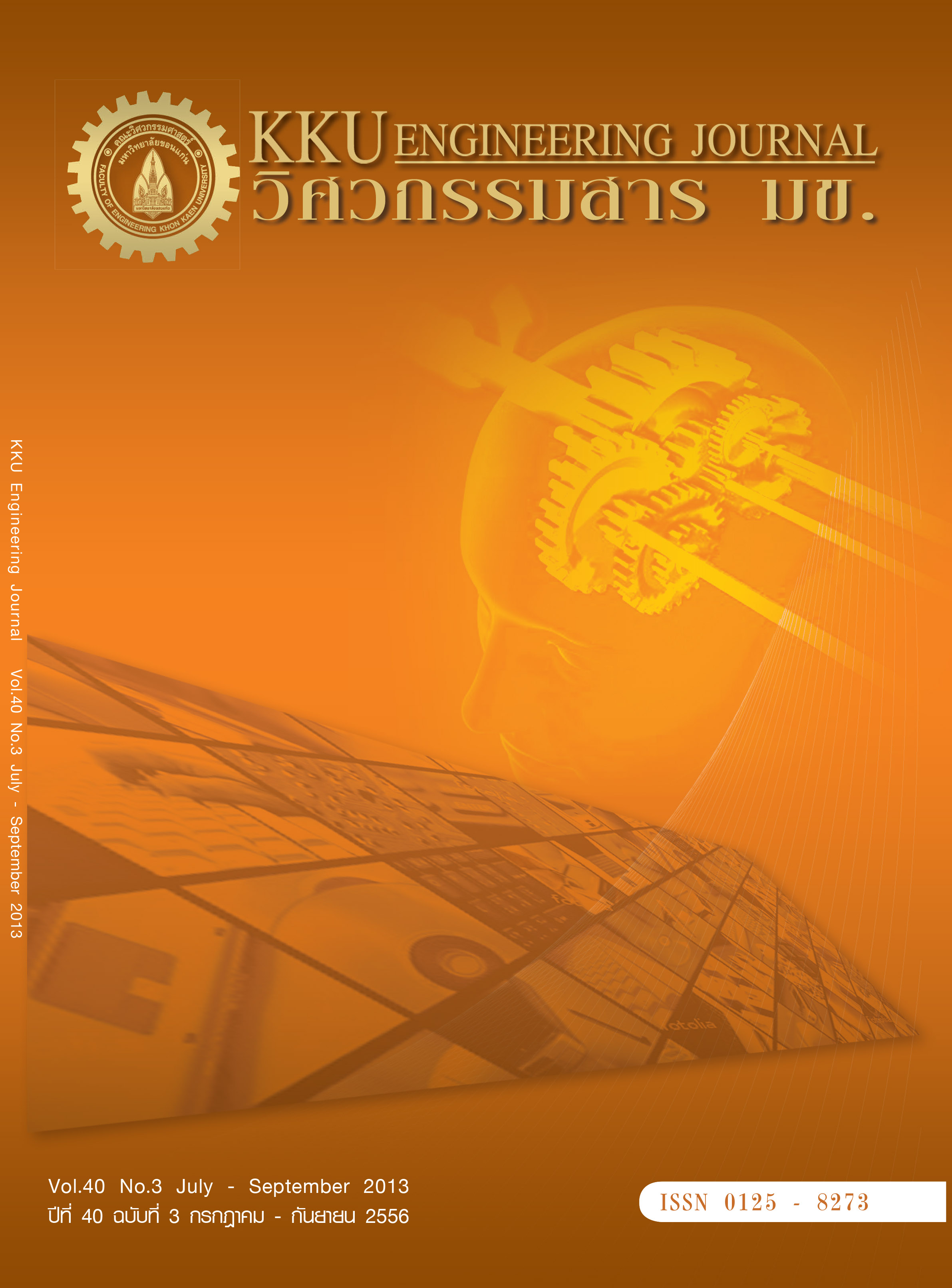Quality variation reduction in electroplating industry
Main Article Content
Abstract
The aim of this research study was to reduce the amount of variation occurring during the Mosfet transistor
manufacture electroplating process, using the S1NB model and an experimental design to determine those
conditions most suitable for reducing such variation, plus provide average outcomes as close as possible to
the target. The experiment used a factorial design containing five factors, these being: 1. the electric current, 2. the coating period, 3. the quantity of tin used, 4. the quantity of bismuth used, and 5. the coating basket
pattern - each of which had two levels. After that, findings ascertain the best coating to use - based on a
significance level of 0.05. The results showed that the most appropriate values to use for each factor were an
electric current of 40 amperes, a coating period of 10.1629 minutes, a tin quantity of 20 grams per litre, a
bismuth quantity of 0.4 grams per litre and choosing the coating new basket pattern. The use of these
parameters resulted in the level of variation in terms of thickness was reduced by 66.69 percent, and in
terms of the percentage of tin used, by 51.23 percent. In addition, the average thickness and percentage of
tin values closer to the target, these being 10 micron and 97.5 percent, respectively.
manufacture electroplating process, using the S1NB model and an experimental design to determine those
conditions most suitable for reducing such variation, plus provide average outcomes as close as possible to
the target. The experiment used a factorial design containing five factors, these being: 1. the electric current, 2. the coating period, 3. the quantity of tin used, 4. the quantity of bismuth used, and 5. the coating basket
pattern - each of which had two levels. After that, findings ascertain the best coating to use - based on a
significance level of 0.05. The results showed that the most appropriate values to use for each factor were an
electric current of 40 amperes, a coating period of 10.1629 minutes, a tin quantity of 20 grams per litre, a
bismuth quantity of 0.4 grams per litre and choosing the coating new basket pattern. The use of these
parameters resulted in the level of variation in terms of thickness was reduced by 66.69 percent, and in
terms of the percentage of tin used, by 51.23 percent. In addition, the average thickness and percentage of
tin values closer to the target, these being 10 micron and 97.5 percent, respectively.
Article Details
How to Cite
Junwiang, W., & Charoenchai, N. (2014). Quality variation reduction in electroplating industry. Engineering and Applied Science Research, 40(3), 397–405. retrieved from https://ph01.tci-thaijo.org/index.php/easr/article/view/21728
Issue
Section
ORIGINAL RESEARCH
This work is licensed under a Creative Commons Attribution-NonCommercial-NoDerivatives 4.0 International License.



